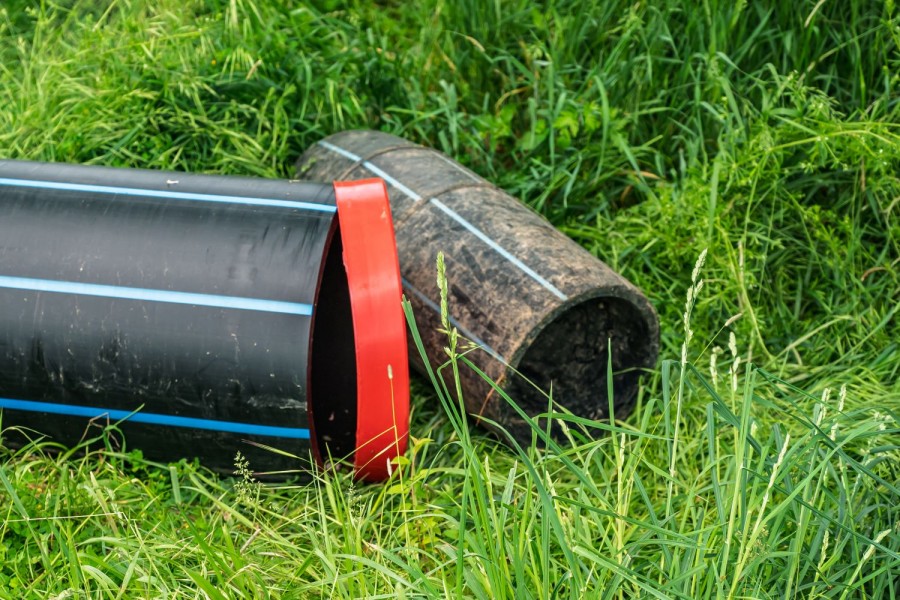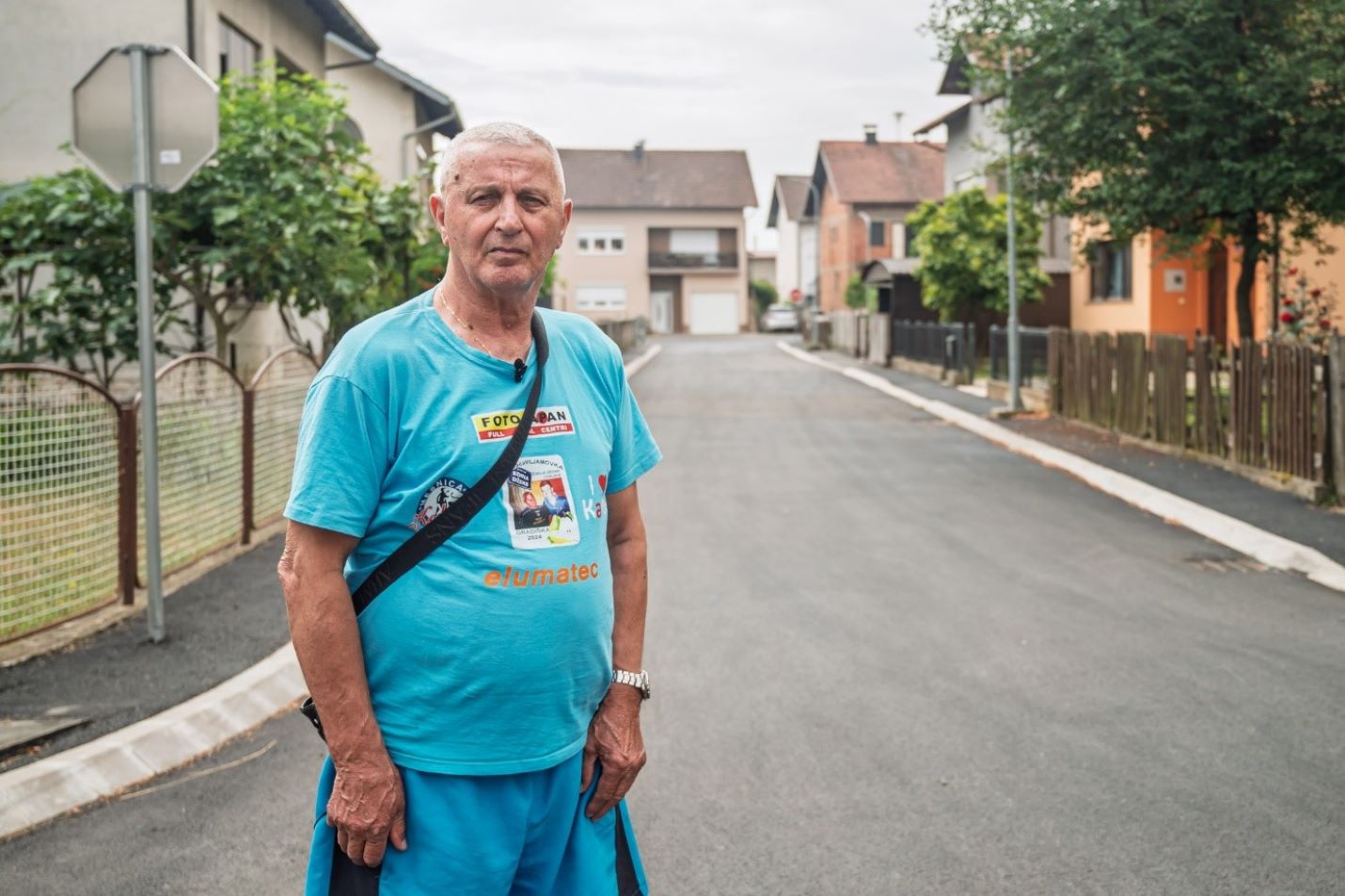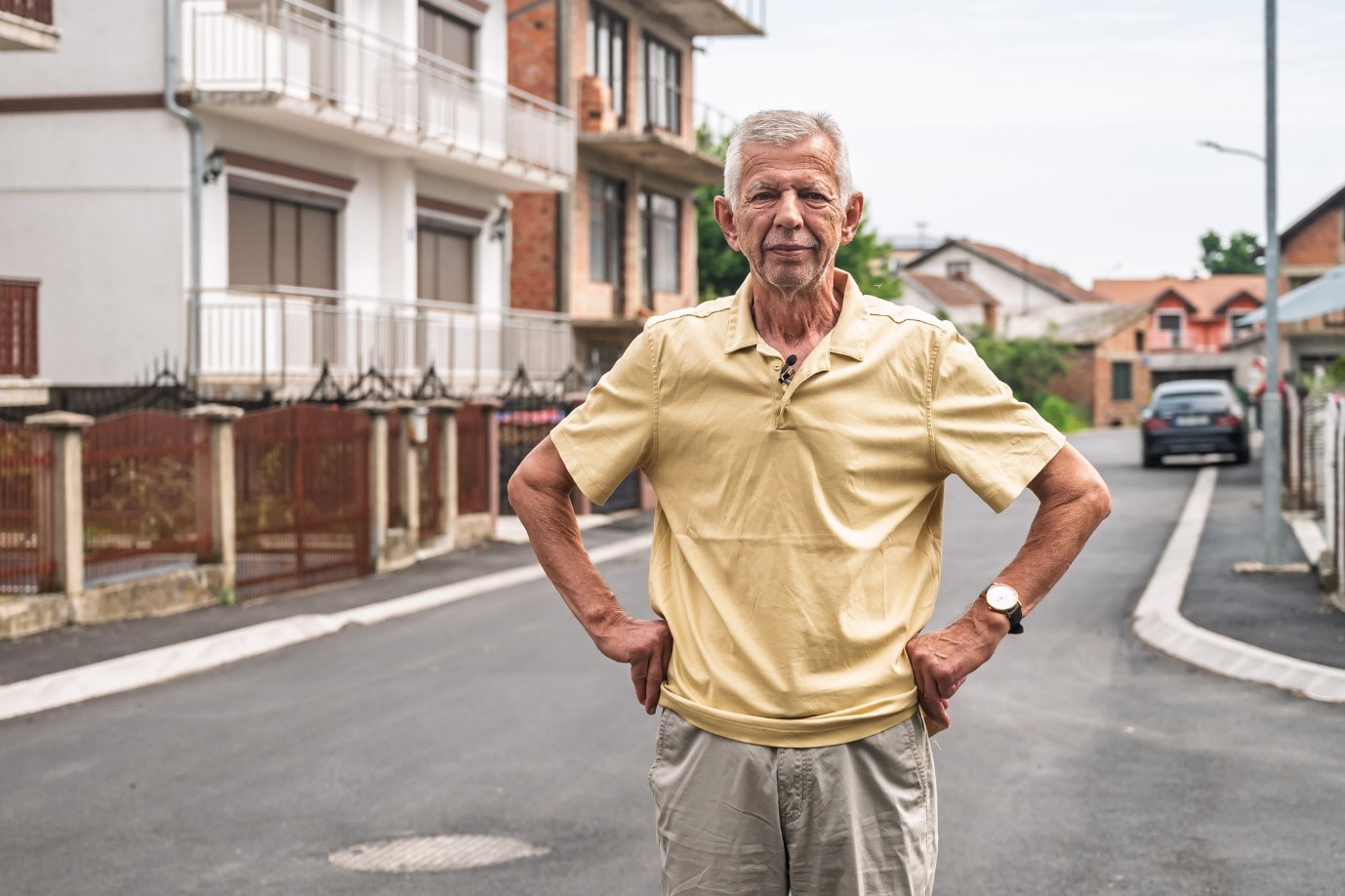Municipal Environmental Governance (MEG) Project – Phase II
Gradiška: Healthier and safer living for Tekija residents thanks to the new sewage network

Each heavy rainfall used to bring new problems for the residents of the Tekija local community, located along the Sava River. Since the settlement had no public sewage network for many years, water would accumulate on the streets, forming large puddles. Locals would jokingly say that they could even fish in them, but behind the joke was a serious issue, as those puddles often contained wastewater.
“Over the past four decades, we managed as best we could. We had to keep wastewater from our households in underground tanks or septic pits,” recalls 75-year-old Kasim Grgić, a Tekija resident since 1980.

Kasim Grgić/Photo: Sulejman Omerbašić
Grgić adds that septic overflows often threatened people’s health and the environment, spreading an unpleasant odor throughout the entire neighborhood.
Living under such conditions brought constant worry and uncertainty for Tekija’s residents. Many times, they had to improvise to protect their homes from polluted water seeping in.
“We had some sort of improvised sewage that we maintained ourselves to avoid septic overflows. Wastewater had nowhere to go, and the street would turn into a stream after even the smallest rain. The water would rise half a meter high”.
Kasim Grgić
Since September 2024, the situation has begun to change completely thanks to the project “Sewage and Wastewater Drainage in the Tekija Settlement”, implemented through the cooperation between the City of Gradiška and the United Nations Development Programme (UNDP), within the framework of the Municipal Environmental Governance (MEG II) project, implemented by UNDP in BiH and funded by the Government of Switzerland, Sweden, the Government of the Czech Republic, as well as the European Union.
The total value of the project amounts to BAM 1,369,885.43, of which MEG II contributed BAM 162,810, while the remaining amount was financed by the City of Gradiška.
The newly built sewage network covers Beogradska, Branislava Nušića, Save Mrkalja, Lejle Kulundžije, and Isaka Samokovlije streets, with a total collector length of 1,208.9 meters. An additional 571 meters of connection pipes now link 82 households, or around 293 residents, to the new system.
“It’s a pleasure to live here now. Without support through the MEG II Project, we would still be buried in water, sewage, and stench. Living conditions are now incomparably better, and people can live normally again,” says resident Kasim Grgić.
The project’s major benefits are also confirmed by returnees to their hometown of Gradiška. Among them is Ćazim Softić, who returned to live in the Tekija local community two years ago after 40 years of working in Sweden. He says that the ongoing improvements in his community reassure him that returning was the right decision.

Ćazim Softić/Photo: Sulejman Omerbašić
“This means a lot to me. We used to have big problems with sewage, water, and rainwater. There was always mud and puddles everywhere. Today, the situation is completely different. Every year, things keep improving — roads, infrastructure, public services. The City of Gradiška is truly moving forward”.
Ćazim Softić
The construction of the new sewage network in Tekija has resolved one of the biggest infrastructure challenges for the City of Gradiška, as this densely populated area produces the largest volume of wastewater.
The Mayor of Gradiška, Zoran Adžić, emphasizes that this project marks a major step toward modernizing the city’s public utility infrastructure.

“The greatest value of this project lies in the fact that it has laid the foundation for establishing a comprehensive wastewater management system in Gradiška, including a connection to the future wastewater treatment plant. This infrastructure investment represents a significant step toward modernizing public utilities and protecting the environment, while also improving living conditions for citizens”.
Zoran Adžić
The establishment of a future wastewater treatment system in Gradiška will further protect the Sava River, the natural border between Bosnia and Herzegovina and the Republic of Croatia. The Tekija project therefore contributes not only to the local community but also has broader environmental and social significance.
Through the Municipal Environmental Governance (MEG II) project, implemented by UNDP in BiH and funded by the Government of Switzerland, Sweden, the Government of the Czech Republic, as well as the European Union, the foundations have been laid for long-term and sustainable wastewater management in Gradiška. UNDP and its partners through MEG II continue to support local authorities in ensuring quality water services that reach all households.
https://www.youtube.com/watch?v=nPmJ9S1_jnc
